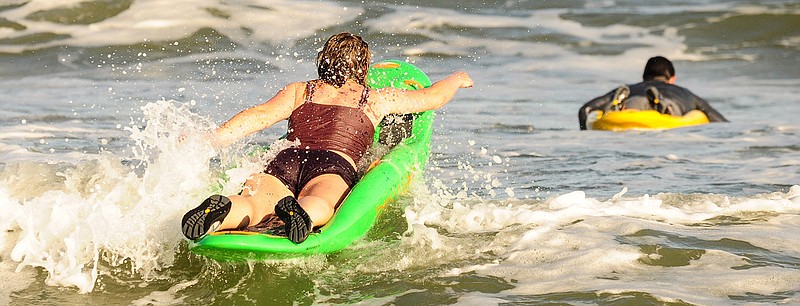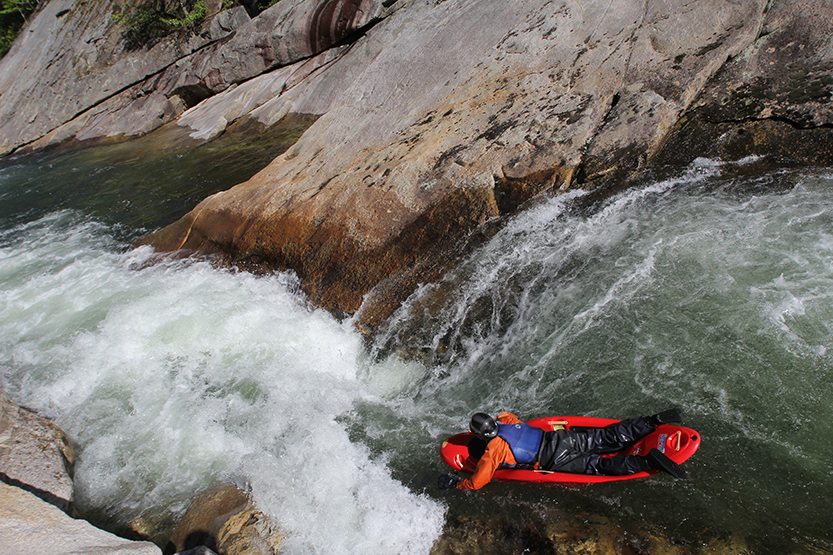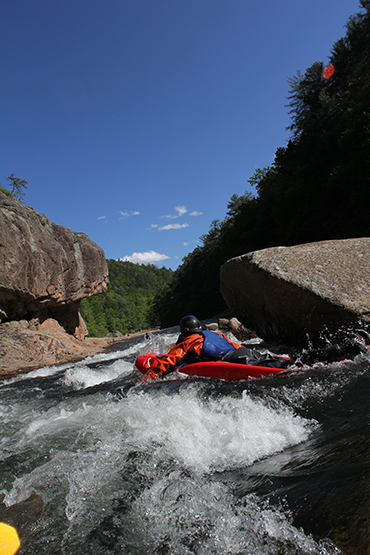Lessons
While the Bellyak was born on the Ocoee River, the company’s local river, the French Broad, is where the first host of classes took place. However, Bellyak is growing, so keep an eye out for clinics on the Ocoee, Tuckasegee and Nolichucky rivers. To purchase your own craft, or for more information, visit bellyak.com.
Imagine traversing the tumultuous, choppy waters of the Ocoee or French Broad rivers, but instead of doing so in a kayak or raft, you're going down headfirst on a kayak/surfboard hybrid. Intrigued?
Welcome to the world of Bellyak.
Bellyaks are the brainchild of Adam Masters, a longtime kayaker who - as most paddlers do - began looking for a new thrill. So he took to hand-paddling his kayak down the Ocoee in the prone position face-first. He was hooked, but the deck of his kayak was too unstable and left him with a high center of gravity.
He used old freestyle kayaks to create his prototype, cutting the decks off and using the hollow shells as molds, and after several iterations, he managed to get the center of gravity low enough and the craft stable enough.
While Bellyaks were made with a thrill-seeking attitude in mind, Masters says they tend to be safer than a typical spray-skirt kayak.
"There's no risk of entrapment, and you can roll and self-rescue these things very easily," he says. "There's nothing [on a Bellyak] that can fill with water."
Masters grew up around kayaks; his father, Bill Masters, started esteemed kayak manufacturer Precision Kayaks in 1975. In all his years on the water, he's seen countless people in training classes intimidated by rolling a kayak, the act of uprighting the boat after it's flipped with the paddler still inside. Without the proper skills, the fear of staying submerged is powerful. By making it easier to get back on a Bellyak and eliminating the risk of becoming trapped underwater, he hopes to open the door to get more people out on their local whitewater.
Bellyak isn't just great for new recruits, though. The sport makes Class III and IV whitewater exciting for veterans again, by putting paddlers so close to the action, Masters says. And hand-paddling means more precision is required, he adds.
"It's a much more intimate experience on the river," Masters says. "You have to be on your game a lot more. It can get very technical" - technical, but not hard to understand, he says.
Masters, who resides in Asheville, has already led several training clinics on the French Broad River, taking people from complete novices to navigating Class IV whitewater on their own within six weeks, he says.
There are some limitations, though. Because of the paddler's prone position, Masters says he hasn't advised anyone to take on shallow Class V rapids with drops - though he's sure someone will eventually try it.
In addition to the Class III and IV rapids for which it was made, Bellyaks have also found popularity on lakes. Open water swimmers have found the craft useful for cross-training, and some of Masters' biggest clients are summer camps hoping to incorporate the boat into their canoe offerings, he says. Bellyak is registered as an official sport with the American Canoe Association.
"We don't aim to replace kayaks in any way, but if you're going down the Ocoee, there's no other way I'd want to go than on a Bellyak," Masters says.


